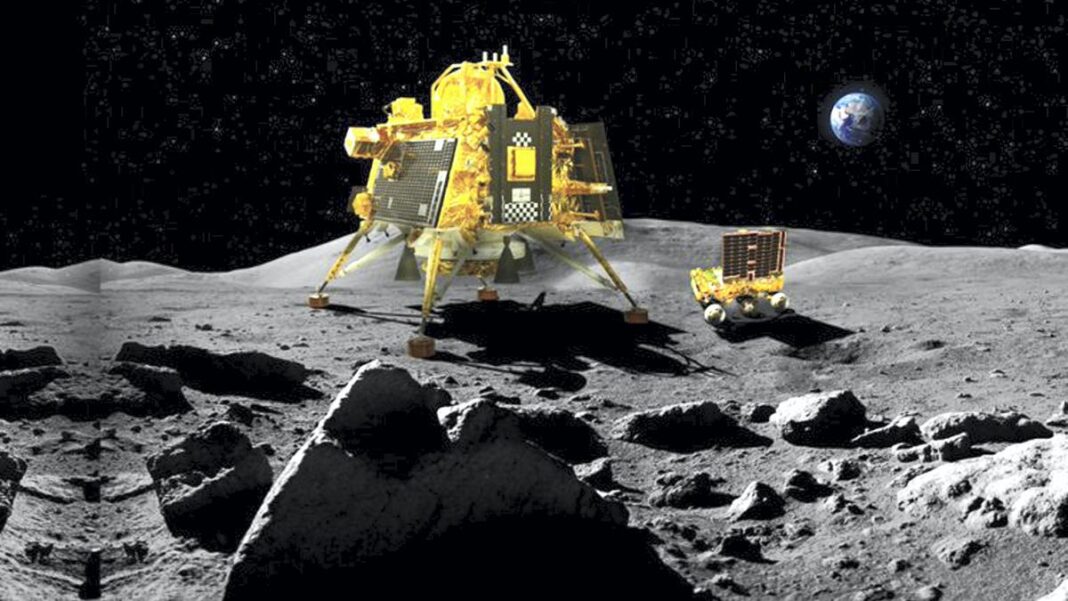India ISRO Chandrayaan-3, Luna-25: Moon’s southern pole’s enigmas unraveling race
As per ISRO, Chandrayaan-3 is scheduled to touch down on the moon’s 🌖 surface on August 23, 2023, approximately at 18:04 Hrs. IST.
Checkout this update
Chandrayaan-3 Mission:
Chandrayaan-3 is set to land on the moon on August 23, 2023, around 18:04 Hrs. IST.
Thanks for the wishes and positivity!
Let’s continue experiencing the journey together
as the action unfolds LIVE at:
ISRO Website https://t.co/osrHMk7MZL
YouTube… pic.twitter.com/zyu1sdVpoE— ISRO (@isro) August 20, 2023
The Lander Hazard Detection and Avoidance Camera (LHDAC) from SAC/ISRO has captured the region on the far side of the moon. This camera aids in identifying a secure landing spot for the descent, ensuring it is free from boulders or steep crevices. Checkout latest images from Chandrayaan-3.
Chandrayaan-3 Mission:
Here are the images of
Lunar far side area
captured by the
Lander Hazard Detection and Avoidance Camera (LHDAC).This camera that assists in locating a safe landing area — without boulders or deep trenches — during the descent is developed at… pic.twitter.com/hw2ML4xCY5
— ISRO (@isro) August 21, 2023
ISRO’s statement on Chandrayaan-3
“The soft landing of Chandrayaan-3 is a monumental moment that not only fuels curiosity but also sparks a passion for exploration within the minds of our youth,”
“It generates a profound sense of pride and unity as we collectively celebrate the prowess of Indian science and technology. It will contribute to fostering an environment of scientific inquiry and innovation,” it added.
Lessons from Chandrayaan-2
This undertaking represents ISRO’s strategic response subsequent to the difficulties encountered during the 2019 soft landing attempt of the Chandrayaan-2 mission, which fell short of achieving its primary objectives.
The Chandrayaan-2 mission, notwithstanding its challenges, contributed valuable scientific insights, including the creation of the initial comprehensive map depicting the distribution of lunar sodium and the identification of water ice on the lunar surface through the utilization of the IIRS instrument.
While the countdown to Chandrayaan-3’s lunar touchdown progresses, ISRO Chairman S Somanath has expressed his assurance in the advancement of the mission, underscoring the seamless functioning of all systems as intended. The triumphant culmination of this mission holds the potential to unlock a wealth of knowledge concerning the Moon’s historical evolution, its implications for life on Earth, and the expansion of humanity’s exploratory efforts into the wider solar system and the realms beyond.
For information – The allocated budget for Chandrayaan-3 amounts to 6 billion rupees (equivalent to approximately $72 million based on present conversion rates). The mission encompasses a lander known as Vikram, designed to transport a compact rover named Pragyan.
As per ISRO’s announcement, India’s journey in the realm of space exploration is on the verge of a notable breakthrough with the Chandrayaan-3 mission primed to execute a gentle landing on the lunar surface.
This accomplishment signifies a substantial stride in the domains of Indian Science, Engineering, Technology, and Industry, serving as a representation of our nation’s advancement in the sphere of space exploration.
The highly anticipated occurrence will be presented in real-time on August 23, commencing at 17:27 Hrs IST, and will be accessible through various platforms, encompassing the ISRO Website, its YouTube channel, ISRO’s Facebook page, and the DD National TV channel.
Why is studying the moon important?
Water holds immense importance for the existence of life as we comprehend it, and within its composition lies oxygen, a crucial life-supporting element. However, its utility extends beyond this fundamental role. The combination of hydrogen and oxygen present in water could potentially serve as propellants for rockets. In actuality, NASA’s Space Launch System (SLS) employs a mixture of liquid hydrogen and liquid oxygen as its propellant.
Conducting space expeditions from the Moon might prove to be less complex than launching them from Earth. The Moon’s gravitational force is merely one-sixth that of our planet, and it lacks any substantial atmosphere. Essentially, nations or private enterprises that establish enduring human habitats on the Moon could gain a significant advantage for embarking on missions that delve deeper into the realms of space.






